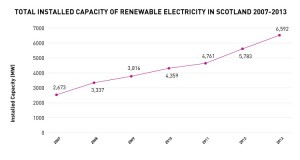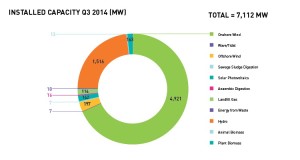The following editorial appeared today (25 April 2015) in the Washington Post:
““CLIMATE CHANGE can no longer be denied,” President Obama said in Everglades National Park on Wednesday. “It can’t be edited out. It can’t be omitted from the conversation.” No matter how much, Mr. Obama might have added, Republican presidential hopefuls would like to neglect the matter.
Since the GOP presidential season began, Sen. Ted Cruz (Tex.), the first major Republican to declare his candidacy, sounded the most extreme note on global warming, insisting that his attacks on scientists make him akin to Galileo standing up to 16th-century theological authorities. Shortly after announcing his candidacy, Sen. Marco Rubio (Fla.) offered some vague doubts about how much humans contribute to climate change. Former Florida governor Jeb Bush, who has not yet formally entered the race, said that he is “concerned” about climate change and that the United States should negotiate with other nations about it, but he also suggested that the private economy has already addressed the problem and that he’s more worried about the “hollowing out of our industrial core.”
The common element among GOP leaders is resistance to the notion that the government needs a significant policy against greenhouse-gas emissions. What would the national conversation be like if Mr. Obama got his way and they accepted the need to act with ambition?
Ironically, it wouldn’t be kind to some of Mr. Obama’s policies, but that’s not his fault. Because of the GOP’s abdication, the Obama administration has cobbled together a climate plan from legal authorities it could exercise without Congress’s say-so. The result is an awkwardly designed and inefficient approach. A more reasonable Congress could shape a more efficient plan, with an eye toward sparing the economy gratuitous pain.
Economists have known for decades how to do this. First, the government should eliminate energy subsidies of all kinds — for fmossil fuels as well as renewable energy. Then Congress should put a significant tax on carbon-dioxide emissions and set it to rise over time. The resulting market forces would decide how the economy would move to a greener state. Consumers and businesses would have more reason to consider wasting less electricity, buying efficient appliances and investing in products that require less carbon dioxide to make. Generators of electricity would have an incentive to use cleaner fuels and renewable sources of energy — when it makes economic sense, not when the Environmental Protection Agency decides they must. Companies that exploit giveaway subsidy policies would have to compete fairly.
Republicans, meanwhile, could return any revenue raised to taxpayers, either directly or by reducing taxes on labor, on corporations or in any manner of their choosing.
The nation’s climate debate has been impoverished by the absence of responsible conservative voices. A revenue-neutral carbon tax is a reform Republicans should love. It could end irrational federal subsidies, lower the GOP’s most-hated taxes and harness market efficiency to provide some insurance for the planet at a minimal cost. Instead, the party’s would-be leaders appear to be looking for any way to avoid engaging seriously.”
I don’t always agree with the Post’s editorial positions, but on this subject I agree strongly. My views on the need for putting a price on carbon emissions to allow market forces to address global warming and climate change are well documented in several of the posts you will find on this blog web site. I also agree, and have written, that government subsidies to energy companies are unbalanced and need redress if not outright elimination so that energy technologies can compete on a level playing field. I also agree that using the resulting revenue proceeds of putting a price on carbon emissions to address inequities and reduce other taxes is a basis for bipartisan cooperation between Democrats and Republicans.
It is more than time for the U.S. Congress to get on the right side of history and address the global warming issue in a way that protects the long-term interests of the nation and the larger global community.



